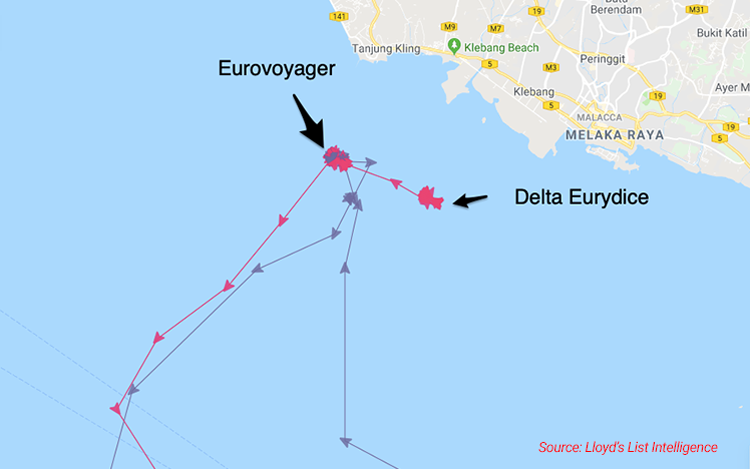Venezuela mimics Iranian sanction-evasion tactics
A location in waters off Malaysia is playing host to a string of ship-to-ship transfers, where oil originating from Iran and Venezuela is offloaded and heads towards China as a final destination
Venezuelan-linked oil vessels are using methods similar to those used by Iranian-linked in an area off Malaysia to disguise the origin and destination of their cargoes to China
IRAN remains undeterred by unilateral US sanctions on its crude exports, with a shipment of oil currently heading for Syria after a ship-to-ship transfer eight days ago.
But it seems Venezuelan vessels may now be using similar methods in the same area off Malaysia to disguise the origin and destination of their cargoes to China.
The suezmax tanker Masal, owned by the National Iranian Tanker Company, transferred its 1m barrel cargo of oil to an undisclosed ship on July 11, while at anchor in waters in the Red Sea near the Suez Canal, vessel-tracking data shows.
A week earlier, Gibraltar had detained the Iranian controlled very large crude carrier, Grace 1, with its 2m barrel cargo of Iranian crude bound for Syria.
The vessel Masal is one of four tankers known to have shipped Iranian crude to Syria in the past three months, as US sanctions restrict Iranian shipments and force vessels to deploy tactics to escape detection and avoid scrutiny.
All Syrian-bound vessels turn off their automatic identification system responders during the STS transfer and afterwards, while sailing, making it difficult to immediately identify the tanker that took the cargo. The vessel joins the NITC-owned Sylvia I, now heading for Syria without any AIS signal after exiting the Suez Canal on July 5.
Iran is using its own fleet of NITC tankers, which include as many as 36 VLCCs and suezmaxes to lift crude, turning off AIS transponders that transmit vessel location while loading, and also during ship-to-ship transfers to obfuscate the destination and origin.
A further flotilla of Chinese-owned fleets of at least six VLCCs, plus several suezmaxes and six product tankers is also deploying the same strategy to ship condensate and crude to Chinese ports.
Flag-shopping and changing classification societies are changed to further complicate detection and avoid punishment.
Now, Venezuela has borrowed these tactics.
The vessel Eurovoyager, a Liberian-flagged suezmax tanker operated by Piraeus-based Eurotankers, took on a cargo of crude from another suezmax, Delta Eurydice, in waters off Malacca three days ago.
The Liberian-flagged ship Delta Eurydice, operated by Delta Tankers, had loaded in Puerto la Cruz around May 13, vessel-tracking data shows. After arriving off Singapore around June 27, the tanker had remained at anchor off Malacca before undertaking the ship-to-ship transfer.
A spokesperson for Eurotankers said nobody was available to comment on the shipment. Delta Tankers gave the same response when contacted by Lloyd’s List
The location in waters off Malaysia is also where Chinese-owned VLCCs conduct similar STS operations with a shuttle service of tankers shipping between there and Iran to transfer the cargo.
The vessel Eurovoyager is now outside the Chinese port of Qingdao, data shows, while the other suezmax is in waters off Singapore after discharging the cargo.
The continued flouting of US sanctions is certain to further inflame tensions between the US and Iran as key ministers in Europe met today to rescue the nuclear deal, imperilled by continuing US sanctions and the detention of Grace 1.
The UK’s foreign secretary Jeremy Hunt said Grace 1 could be released upon receiving assurances the vessel would not head for Syria and the refinery at Banias, in breach of EU sanctions.
The origin of the cargo was not considered for the detention.
Iranian exports have trickled to around 600,000 bpd a month, with nearly all cargoes sailing under the radar, based on vessel tracking and other data, from levels nearly exceeding 2m bpd before the US re-imposition of sanctions in November.
Exports from Venezuela are seen at 920,000 bpd in June, Lloyd’s List Intelligence data shows, boosted by shipments of heavy grades preferred by Asian refiners, according to the International Energy Agency’s recent report.
China-bound loadings were at 400,000 bpd as repayment for oil-for-loans deals, the IEA said.


